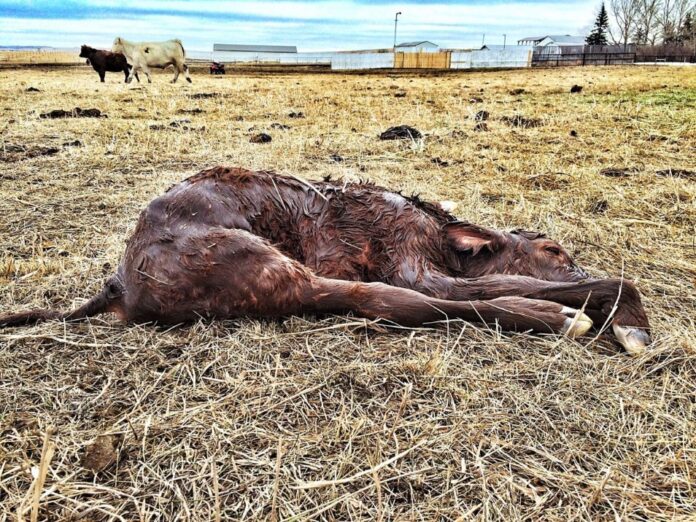A veterinary practice across the waters in South Dakota has taken to social media to advise farmers on the dos and don’ts of calf resuscitation.
Animal Clinic LTD has urged farmers to put a newborn calf in a recovery position. This involves placing the animal upright rather than flat, resting on its sternum, with its head and neck extended forward.
The animal clinic has advised against some practices that some farmers may have traditionally engaged in or some may still advocate.
“One such practice is holding a calf upside down or swinging it from the hind legs, which it does not recommend.
The clinic went out to outline why farmers should not engage in this activity. “The fluid that comes out when you do this is actually from the stomach, not the lungs. In fact, having this fluid run out increases the risk that the calf will inhale or aspirate the fluid.”
Swinging or hanging the calf also makes it more difficult for the calf to breathe. There will be gut pressure on the diaphragm which prevents the lungs from expanding.”
Instead, it advises placing the calf in the recovery position highlighted above, as it allows both sides of the lungs to expand.
The clinic explained that if the calf is lying on its side, the bottom side will struggle to fill with air.
Therefore, extending the head allows the airway to be as open as possible.
“Stimulating them to breathe with a piece of hay or straw up the nose will help. If you have oxygen on hand, placing it near or over the nose and mouth can help get them started,” the clinic concluded.
Earlier this year, we featured a piece from the Beef Research Council, which also looked at calf resuscitation.
According to Dr Claire Windeyer DVSc, associate professor, production animal health, University of Calgary, the day that a calf is born will be the highest risk day of its entire life.
Dr Windeyer explained that if calves do not breathe straight away, we can:
- Simulate it by rubbing it vigorously;
- Stick a finger in its ear;
- Pinch its nose;
- Give their head a slight shake;
- Place a piece of straw to poke the nasal septum;
- Splash some water on its neck or face;
- Squirt some water into its ears.
Get more tips.





